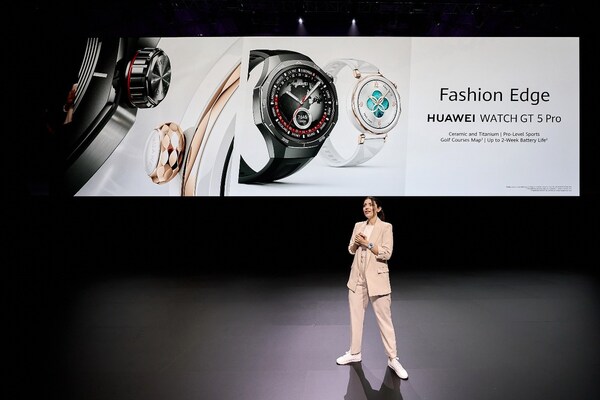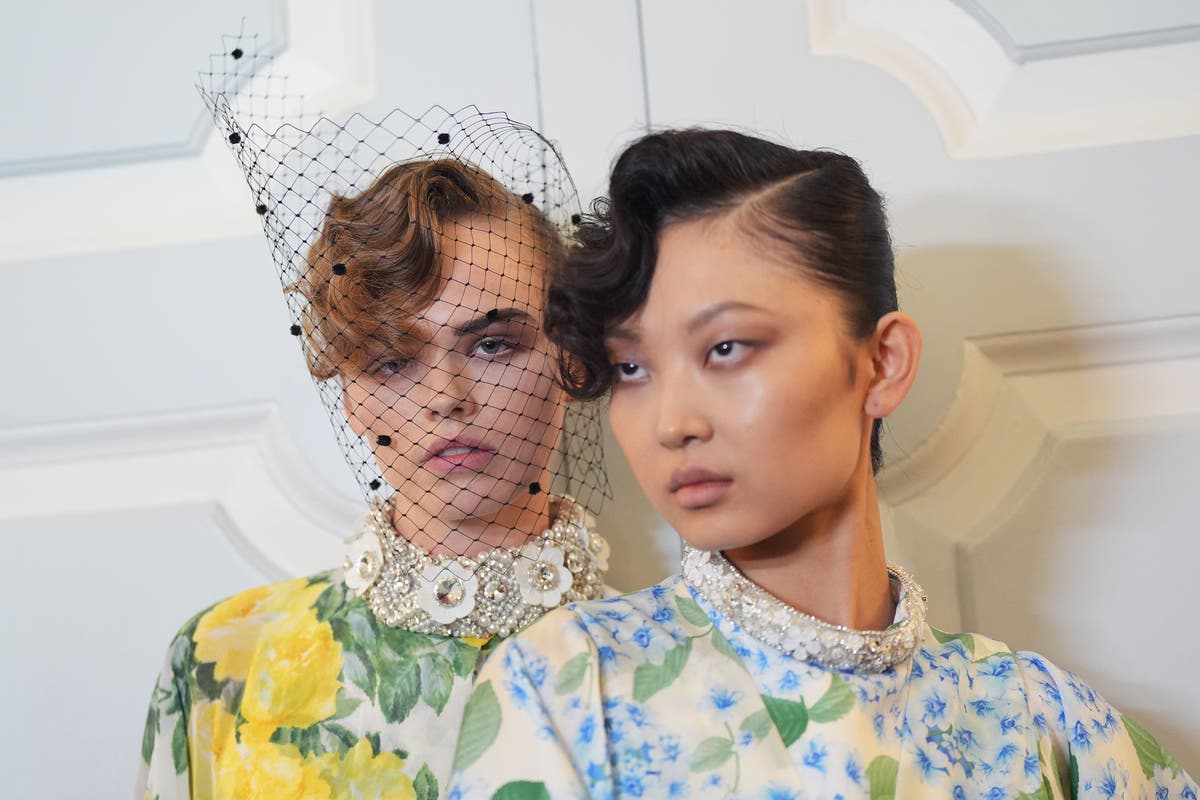A yla and Edie, both aged 12, are hanging out in Westfield Stratford City, a shopping centre next to London’s former Olympic Park, on a Saturday afternoon. They first go to T4, a Taiwanese outlet that sells bubble tea – a sweet, multicoloured cold drink with chewy, or exploding, tapioca balls at the bottom. Ayla went for a rose tea; Edie for strawberry flavour.
They cost £6 each. “It is quite expensive,” says Ayla, “but I earn money from doing chores like unloading the dishwasher, hanging up the laundry.” They head a few metres down the centre to Kenji, a gift, homeware, snack and stationery shop that describes itself as an “east Asian-influenced brand”.

As a birthday present for a friend, Ayla buys a £10 “sushi cat” plushie – a squidgy stuffed animal with a pillow strapped to its back as if it were a bed of rice topped with tuna. “My friend brings in sushi to school every day. She’s really into it,” Ayla says.
Finally, they head to Pop Mart, a Chinese shop, where I meet them. The shelves are lined with hundreds of 8-10cm figurines, intricate and brightly painted £13.50 plastic statues that the company describes as “art toys”.
Some are based on well-known characters, such as Harry Potter or Teletubbies, but most are designed specifically for Pop Mart and share a distinctively east Asian aesthetic, with exaggeratedly large eyes and disproportionately large heads. The two friends are huddled over the section that houses Skullpanda, a character created by Chinese artist Xiong Miao, which is part goth, part spacewoman, with ethereal hair and vampiric makeup. “I think they’re both cute and scary,” says Edie, trying to explain the appeal.
“They’re weird – you just don’t see anything like this anywhere else.” In the space of an hour, despite being in east London, they have not left east Asia. They are not atypical.
I chat to various Pop Mart shoppers, mostly students in their early 20s, mostly (though not all) female, and many talk about how they watch anime, Japanese cartoons, on Crunchyroll, a specialist streaming app; how they have embraced the big hits to come out of South Korea – K-pop , K-dramas, Korean corn dogs (chicken sausages on a stick coated in breadcrumbs and fried) and kimchi; the fact that bubble tea is their go-to “treat” beverage. And this is by no means a London phenomenon – Oxford has at least 10 bubble tea shops; Kenji can be found in Liverpool and Preston; Miniso, a rival Chinese retailer of homewares, toys, stationery and cosmetics, has branches in Brighton and Newcastle; Glasgow’s Buchanan Galleries shopping centre hosts Kim’s, serving Korean corn dogs and kimchijeon (pancakes); and Costa Coffee – Britain’s biggest coffee chain – is selling blueberry burst and mango berry bubble tea. When I was growing up in London in the 1980s, nearly anything cool – toys, snacks, fashion, TV or films – came from the US: Levi’s jeans and Converse trainers, The A-Team, scratch-n-sniff stickers, hamburgers and milkshakes, Marty McFly and Ferris Bueller.
Now, teenagers and their older siblings are increasingly turning east, specifically to east Asia: China, Japan, Taiwan and South Korea. It’s not just in shopping centres. This year at Glastonbury one of the acts on the Pyramid stage was Seventeen, a Korean boy band that sold more than 10m albums last year.
Only one act sold more: Taylor Swift. I ask the girls why they and their friends have turned their gaze eastwards. “Back then, America was futuristic,” says Edie.
“Now, all the things that are out-there and crazy and different are from Asia.” Part of the rise is pure economics. In the case of South Korea, the government has actively funded cultural exports such as K-pop and K-dramas, investing £229m last year.
And while the meteoric rise of China’s economy may have faltered, some companies have raised huge sums on the stock market to expand on a global scale. The parent company of Temu, the Chinese retailer rivalling Amazon, is one example, and another is Pop Mart, now worth £5.2bn.
There’s more to this shift from west to east than money, however. A generation of young British consumers appears to have found something in the food, culture, brands and bands of east Asia that they can’t find in the west. “I don’t think the young hate America, it’s just they’re now able to see what’s on offer all around the world,” says Zareen Islam, 38, from London, a toy collector who is visiting Pop Mart with her daughters, Ella, seven, and Haani, six.
“When we were young, America was always on TV. We didn’t have a window to look into what else was on offer, and now the windows have been opened.” To find out what windows have been opened, I spent a couple of days talking to customers and bosses at Westfield Stratford City, which welcomes 52 million visitors through its doors every year, and houses a number of east Asian brands other than T4, Kenji and Pop Mart.
There is also Miniso; Bunsik, a Korean fast-food outlet serving corn dogs and ddukbokki; (spicy rice cakes); and Fuwa Fuwa, a Japanese fluffy pancake cafe. “It really is such a massive growing trend, it is super exciting,” says Kate Orwin, 49, the UK leasing director of Westfield. Possibly the most curious of all these brands is Kenji.
As a Briton, you would presume it was from Japan. There is a section selling packaged food and snacks, such as matcha-flavoured KitKats and bubble milk tea mochi (spherical Japanese desserts with a chewy outer layer), and a whole wall of plush toys. The rest of the store is a mix of stationery, keyrings, gifts and small homewares.
Nearly everything is infused with “kawaii”, the Japanese term for cute. Browsing the sticker section is Verity Smith, 22, who is about to start a master’s in museum curatorship. She tells me she is a huge fan of Kenji and its stationery.
“When it was just in Manchester, I would take the train specifically from London to visit the Arndale shopping centre. I know that’s a bit extreme.” She adds: “They have my favourite stickers in the entire world.
” She specifically likes Suatelier, a Korean brand that makes tiny stickers that are small enough to fit on to a thumbnail: dogs, food, love hearts, bicycles, doll-like figures wearing kimonos. “I put them everywhere, in my notebooks, on my phone. They bring me joy.
I just love how cute they are. Look at their faces.” I ask why she likes the kawaii look.
“It’s just the aesthetic that is so very different from what we are used to. Because of the rise of minimalism and decluttering, and the plethora of beige and white, on social media these kinds of shops stand out – it’s the maximalism effect,” she says. “People like the unknown.
” Kenji is not really from east Asia. It was started a decade ago by Derek Yong, now 34, who was born in Malaysia and came to the UK to study economics at Birmingham University before becoming an accountant at PricewaterhouseCoopers. He and his business partner were “brainstorming ideas in terms of what the UK market was lacking”.
They had spotted that various distinctively British brands had done well in Asia, notably Laura Ashley, Cath Kidston and Marks & Spencer. “People do appreciate that mismatch of culture, that newness, that freshness,” he tells me from his head office in Warrington. “So we thought, why don’t we create an east Asian-focused brand that would complement the UK market.
That’s how Kenji came about.” There are now 10 shops, mostly in the north-west, but he is aiming for 250 within the next 10 years. So is the brand British or east Asian? “Kenji is British.
That’s where our stores are and our team,” he says. “But we always introduce ourselves as an east Asian-influenced brand.” The day I visit Kenji, many of the shoppers are GCSE pupils who have just finished a chemistry exam.
This includes Misbah Chaudhary, 16, and a friend looking for an end-of-school present for their French teacher. “We have a joke with him about avocados. So maybe we’ll get him an avocado plushie,” says Misbah, who adds: “Kawaii is very popular right now, it’s trending all over social media, on TikTok and Instagram.
” Is Kawaii childish? Not necessarily. “We’re at that stage in our life where we have mixed emotions about growing up and becoming an adult,” says Misha. “Leaving secondary school is a big thing, a real transition, and I feel a part of my life has been taken away from me.
This kind of allows me to say goodbye to my childhood. Because we’re all children at heart, honestly.” A few of the shoppers talk about “nostalgia” for their childhood, even though they are barely out of their teens.
Shan Ahmed, 20 and studying law, is browsing the Hello Kitty and Cinnamoroll oversized water bottles in Miniso. “Life is a bit bleak at the moment, especially with the cost of living. When you look at all this stuff, it’s just really colourful.
” And few things are as joyful and bubblegum colourful as Korean pop music. Keeyanna, 16, who is in Miniso buying a plushie, tells me that she would take a free ticket to Red Velvet, a K-pop girl band, over Taylor Swift any day. Elizabeth Whitfield, 26, from Chelmsford, shopping in Pop Mart, says: “A lot of my friends are into K-pop.
BTS are taking over the world.” In June, Ateez, an eight-piece boyband, secured their third Top 10 album in the UK in a single year. Stray Kids, another clean-cut octet, headlined Hyde Park early this month.
Some experts believe K-pop is a crucial factor in the rise of the east Asian aesthetic on the UK high street. Prof Kate Taylor-Jones, 44, has just finished a five-year stint as head of east Asian studies at the University of Sheffield. For her, Gangnam Style – a 2012 dance song by Psy that became the first video on YouTube to generate 1bn views – was a watershed.
“It opened the door to people becoming passionate fans of K-pop bands – BTS, love them or hate them, hit the stratosphere; Blackpink and all the other ones.” The rise of K-pop, as well as other Korean exports sweeping the west – the so-called Hallyu Wave – was not spontaneous. “It’s heavily government organised,” Taylor-Jones explains, “sponsored by the government to promote Korean culture worldwide, and this has included food, fashion, music, film and television drama.
” Many of her students, especially those wanting to study Korean, have had their interest sparked by these cultural exports. About 50 to 80 students do Korean at Sheffield, at a time when most foreign language departments at universities are in crisis. “If you went back to 1989, it was about four people,” she says.
She argues that many of the aspects of east Asian culture popular with youngsters, especially girls, share some similarities. “They’re cute. They’re quite friendly.
There’s a kind of an ease and a comfort to them,” she says. “These are not threatening in any way. BTS is a perfect example of that – lovely young boys.
” Jae Cho, the owner of Bunsik, agrees, saying that you can trace a link from Gangnam Style to a generation of British teenagers willing to try the ddukbokki and Korean corn dogs that his restaurants sell. I point out that Gangnam Style hit the stratosphere more than a decade ago, when many of his customers were in nappies. “One hundred per cent.
Culture is so powerful,” he says, arguing that Gangnam led to BTS, who sold out Wembley in 2019, and other Korean acts. “I paid £800 for a ticket for me and my daughter,” he blows out his cheeks in horror, “and our seats were so far away. I was expecting to see mostly Asian people in the audience, but it was all Europeans.
” Sign up to Inside Saturday The only way to get a look behind the scenes of the Saturday magazine. Sign up to get the inside story from our top writers as well as all the must-read articles and columns, delivered to your inbox every weekend. after newsletter promotion K-pop made all these teens willing to try K-dramas, he says.
Netflix said last year that more than 60% of its users had watched at least one Korean title on the service, with Squid Game the most streamed show ever on the platform. “What do they do in K-dramas? They eat!” Cho laughs. Cho, 45, from Busan, South Korea, is another high-street entrepreneur who came to the UK as a student and never left.
He had been running a number of restaurants in London, but when the Covid lockdown hit in 2020 he was forced to switch to takeaways. He hit on the idea of a place serving his favourite snack from his childhood: corn dogs. He says of his nine-year-old: “My daughter asks every weekend for McDonald’s.
I wanted to create something that young people would like.” The first Bunsik – named after the Korean word for “street food” – opened in spring 2021 on Charing Cross Road in London, a thoroughfare once famous for its dusty secondhand bookshops, but now home to Korean minimarts Oseyo and Seoul Plaza; WingWing, a Korean fried chicken shop; and K-beauty retailers Pureseoul and Nature Republic. Bunsik rapidly became a hit thanks to a vegetarian corn dog with melted mozzarella cheese covered in potato, which is now Cho’s most popular item.
Customers soon discovered that you could get a great “cheese pull” effect – biting into the dog and stretching out the stringy cheese – which they posted on social media. “When it first opened, people travelled from Brighton, Oxford ..
. We became so hot on TikTok,” says Cho. Since then, he has opened a further five outlets and – as of the end of June 2024 – shifted an astonishing 1,537,432 corn dogs.
We are chatting in the food court of Westfield as I try a £4 corn dog with some Korean fried chicken on the side – a dish now so popular that even Wetherspoon’s pubs added it to their menus during the spring of 2024. “Everyone wants to put Korean on the menu because it sells,” says Cho. Afterwards, I speak to Lorenz David, 16, and his seven friends, all of whom have just finished an exam.
He has had a corn dog and tells me that McDonald’s, though cheaper, wasn’t as appealing. “Look, it’s different, it’s new, the marketing is good – it looks good.” He could just as well be talking about bubble tea, with its dizzying rush of different flavours, customisable by the consumer.
“I love bubble tea,” Elizabeth Whitfield, 25, tells me. “I love the variety and showing friends all the different flavours and popping boba. It’s a fun little drink.
” Invented in Taiwan in the 1980s, bubble tea has been in the UK for quite some time, but has only recently hit the mainstream. Bubbleology claims to have been the first company to open a shop, in Soho, London, in 2011; it now has 43 locations around the UK. The brand was launched by Assad Khan, a former banker who had come across the drink in the US.
He estimates that there are now 400 bubble tea shops across the UK. “Bubble tea is an answer to the coffee-based Frappuccino,” he says. A beverage that is cold, fun, and “a quasi-food.
And it is amazingly Instagrammable with the different layers. It’s a very visual product.” That has been key to its success.
“The younger generation, because they are tech savvy, are open to other ideas and cultures from around the world. They are very adventurous,” says Khan. Bubbleology has now branched out into supplying at-home bubble tea to supermarkets, including Asda and Tesco, and estimates it is on track to sell, in total, 8m cups of bubble tea this year.
While its teas tend to sell for £4.75, many shops charge up to £6. David and his friends had all spent about £8 or £9 on their lunch at Bunsik.
He says he could afford to splash out on his post-exam treat because, “I earn money by selling clothes on Vinted.” Yong, the MD of Kenji, says: “The average disposable income for our customer base is £30 to £50 a week, depending on their age – that’s specifically those under 18.” I express surprise at how high those figures are.
“Teenagers nowadays have got a lot more disposable income than we think. So, if it’s a product or brand that they can relate to, that’s where they’ll be prioritising their spend.” Miniso ruthlessly targets pocket-money consumers.
This is another Chinese brand that sells a lot of plush toys, stationery and gifts for young customers, with 85% of its products costing less than £15, many of them branded with licensed characters such as Hello Kitty, My Melody, Pokémon and Winnie the Pooh. It has expanded rapidly since it was founded in 2013, and is now in 110 countries with 6,500 stores, 27 of which are in the UK. It also sells lots of cheap beauty products, such Magnificent Life Lady Perfume (£6.
99 for 50ml), and £4.99 Hello Kitty eye masks. Saad Usman, 39, Miniso UK’s chief operating officer, says his key customer is “a little girl who first steps in for the plush toys”.
He adds: “She’s growing up with our brand. Then she can get into beauty with My Little Pony chapstick.” Eventually, these children will transition to more grown-up homewares or cosmetics.
Korean cosmetic and skincare products, or K-beauty, is big business, worth £5.9bn, according to the British Chamber of Commerce in Korea . Superdrug, the UK high-street chemist, now has a section dedicated to Korean and Japanese beauty.
K-beauty brands, many of them vegan, have gained a cult audience thanks in part to unusual ingredients such as rice, centella (an east Asian herb), fermented kombucha and snail mucin protein, as well as an involved 10-step skincare routine that supposedly creates a dewy “ glass-skin effect ”. Dr Jart+, a Korean beauty brand, has racked up more than 1bn views for its videos on TikTok. “K-beauty is a trend at the moment,” says Usman.
“And Miniso is all about the trends.” He explains that the product team – “very experienced, very, very clever, sitting in China” – scour TikTok and other social media sites to come up with new ideas, partly with the help of AI. “They come up with up to 10,000 ideas a week.
And they will launch 100 products.” Perpetual newness is one of the secrets to Pop Mart. So far it has launched 1,000 ranges, each comprising between nine and 12 different figurines, with new ones appearing every week.
This has fed a deeply loyal audience, some of whom queued from 3am to be the first through the doors of its new store on London’s Oxford Street, which opened in June. I was there to witness the founder, Wang Ning, 37, cut the ribbon. The store is his fourth in the UK, and joins outlets in Paris, Las Vegas and Sydney.
“In every country, our target is to open in the most famous, central location,” Ning tells me through a translator, after he has surveyed the scrum around the tills. “I’m so happy we have so many fans in the UK.” Those fans have helped him become very rich, to the tune of £2.
5bn, according to Forbes, which might explain why he had a burly bodyguard shadowing him all morning. One of Pop Mart’s strategies is that most of the figures come packaged in “blind boxes” – so, though you know the range you will be buying, you can’t tell the exact character or which outfit they will be wearing. For many fans, this jeopardy is part of the fun.
Inna Palmer, 38, and her husband, Lewis, 36, drove from Bedfordshire to get to the store by 3.10am. “There is always excitement to see what you’re going to get.
It’s a dopamine rush,” she says. She’s such a fan that she has a tattoo of one of the characters, Hirono, on her arm. Arvin Liu, from China, is Pop Mart’s business development manager for the UK.
He explains the hold characters such as Hirono, Molly, Skullpanda or Labubu have over fans. “They think the figures represent them. They can provide some emotional value.
‘After a long day, I’m super tired and I go to Pop Mart, grab a box, open it. If the figure is smiling, she’s healing me.’” Arvin acts out this scene for me, and releases a big sigh.
And if the figurine is crying? “‘Oh, you know me, you know what I’m feeling today,’” he says, pulling a sad face. That’s what many younger consumers want from pop culture: to be heard, to be understood. For some teenagers, the snacks or K-drama are something different, a bit colourful, a bit of fun.
But for others, all these flavours, brands and characters are a portal into another realm as they seek an identity in an adult world. Taylor-Jones will be happy if a small number of those who spend their pocket money on these high street brands end up reading east Asian studies at university. “It would be good if it sparks a conversation, and people want to learn more,” she says.
“Although it’s sad that consumerism has been the main thing people have picked up on – buying stuff has become the mode of communication.” That is one thing that hasn’t changed since my childhood. Pocket money has always driven a new generation of capitalism.
“You are drawn to colourful, pointless plastic things,” says Ayla, the 12-year-old Pop Mart shopper with wisdom beyond her years. And do you worry it will all ultimately end up in landfill? “They are actually nice things. We’ll display them on our shelves.
I mean, they’re not Kinder Egg toys.” This may be the generation that supposedly cares about the planet, but they are also drawn to stuff that isn’t beige and boring. And the endless variety of the stickers in Kenji or the bubble tea at Bubbleology is very far from that.
.



















